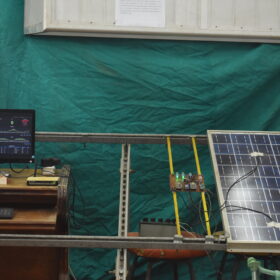New solar-air dual-source heat pump design based on blower fans
Scientists have utilized two blower fans with two roll-bonded bare plates to create a heat pump that can operate in variety of ambient temperature and solar radiation conditions. The system has an average daily coefficient of performance of 3.24.
Exploring the depths of Italy’s oldest BIPV project
Scientists have assessed the performance of Italy’s first publicly funded BIPV project, which was installed in 2001. Their analysis shows that only one of the 10%-efficient panels in the 11 kW array experienced a severe fault that caused the complete loss of functionality.
MIT researchers plan to use acenes to make singlet fission solar cells
Acenes are benzene molecules with unique optoelectronic properties. Singlet fission solar cells can produce two electrons from one photon, making the cell more efficient.
Toshiba develops PV photocoupler for automotive applications
Japan’s Toshiba says its new PV output photocoupler for solid-state relay could be used for battery management systems, onboard chargers, and inverters.
Scientists unveil low-cost, wireless monitoring system for PV systems
Researchers from Egypt have utilized NodeMCU WiFi modules and a single-board Raspberry Pi to monitor and control PV modules. Their tests showed a “good degree of agreement” between the system and multimeter readings.
Four ways heat pumps can assist the world’s energy transition
From using heat pumps in decommissioned power plants, to utilizing them for storage and carbon capture – scientists from China have listed the ways in which heat pumps can help the global energy transition move forward. They showed that their potential is beyond heat electrification.
Reducing PV module temperature with beeswax, paraffin wax
Scientists in Iraq have applied two different kinds of phase-change materials to lower the operating temperatures of PV panels. Their experiment showed that beeswax and paraffin wax are particularly effective in achieving this goal, even when they are combined together.
New model to predict defrost cycles, behavior of air-sourced heat pumps in cold weather
UK-based researchers have developed a novel method to estimate the amount of defrost cycles a heat pump will experience in the winter and how much energy it would require to implement the cycles. The results of their simulation showed a strong relationship between the number of defrost cycles and the ambient temperature.
Hybridizing anaerobic digestion with photovoltaic-thermal energy
Scientists in Spain have proposed to combine anaerobic digestion plants with photovoltaic-thermal panels and have found that this combination may achieve an LCOE of $0.045/kWh across several locations in Europe and North America.
Day-ahead forecasting for commercial PV with battery storage
A research group in South Africa has developed a novel method for PV output forecasting in commercial buildings. The proposed approach is purportedly able to accurately forecast the output power of a PV plant using real-time weather data.










